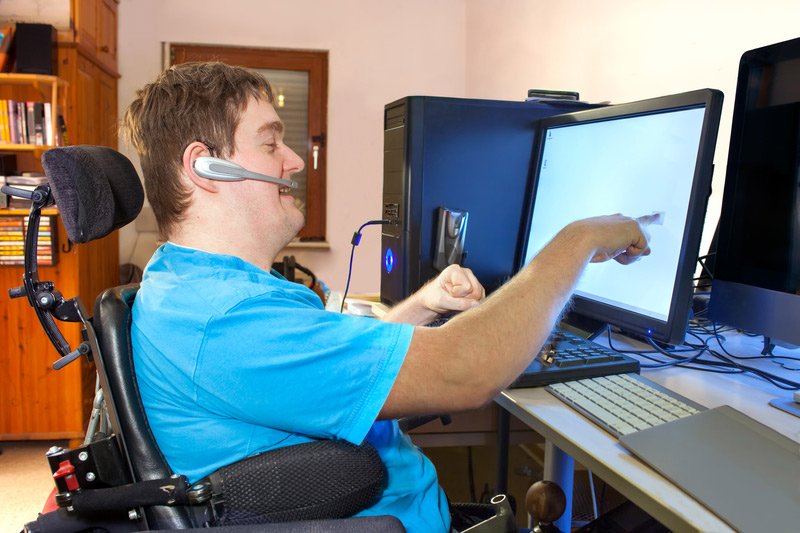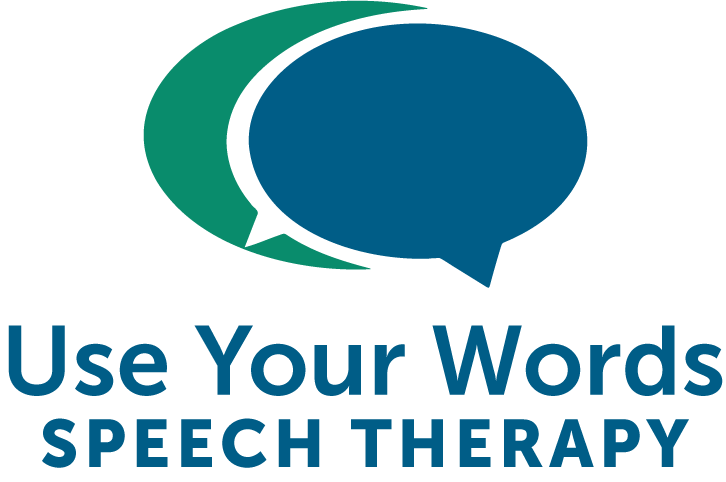
The ability to communicate allows an individual to take control of their world.
We use communication to:
Interact with other people
Express our thoughts and individuality
Ask questions to learn and seek new information
Develop reading and writing skills
Participate and contribute in school
Participate and contribute to their employment
Live more independently as adults
Think of AAC like a pair of eye glasses. Eye Glasses provide access to sight for those who need them. Without eye glasses, daily tasks become impossible and the world becomes small as their independence is lost. A person without eye glasses may rely on others to read for them, transport them to their job, help find items around the house, or identify the people they come across in their lives. By providing access to sight through eyeglasses, independence is regained.
Frequently Asked Questions about AAC
-
The short answer is no! It is a common misconception that AAC impedes oral communication/speech however, this could not be further from the truth. In fact, research shows that AAC can help individuals make gains in speech because it creates a bridge for communication to occur.
In a comprehensive study review, findings showed that of the individuals who started utilizing AAC
89% increased speech output
11% show no change
0% decreased speech output
(Millar, Light, & Schlosser, 2006)
Furthermore, AAC can help decrease the frequency of challenging behaviors that may arise from frustration or communication breakdowns (Carr & Durand, 1985; Drager, Light, & McNaughton, 2010; Mirenda, 1997; Robinson & Owens, 1995).
AAC is sometimes viewed as, “giving up,” on verbal speech, however, that is not correct. The goal is to provide a means for communication which can enhance verbal speech. If verbal speech develops to the point AAC is no longer needed, then these methods can be discontinued. If verbal speech does not develop, then the individual has a means to communicate with society via AAC.
-
AAC is needed when verbal communication does not meet daily communication needs some of the time or all of the time. This can include individuals who are non-verbal as well as individuals who are verbal, but with reduced, limited, or unintelligible utterances or speech. Scheduling an evaluation is a great way to see if AAC is necessary.
-
AAC is not exclusive to non-verbal speakers. In fact, according to the United States Society for AAC, these methods are important for people who some of the time or all of the time cannot rely on verbal communication. Questions we like to ask when someone is considering AAC are:
Does your child present with wrote utterances, or words linked to specific activities, but have trouble when new sentences or words are required?
Does your child present with echolalia where they are able to imitate others, but unable to regularly create his/her own thoughts and ideas?
Do unfamiliar listeners have trouble understanding your child? (This can occur even though you are able to understand your child.)
Has your child made little progress despite receiving speech-language therapy targeting verbal language?
If the answer to one or more of these questions is yes, then AAC should be considered.
-
It is never too early to consider AAC. First words typically emerge between 12-18 months of age. Verbal language development is critical not only for the ability to communicate, but for development of comprehension, reading, and writing. It is important during a child’s early stages of development to have access to expressive language whether verbally or through AAC. If your child or loved one's verbal language is significantly delayed, AAC be an option to help them.
Individuals with complex communication needs who receive only speech therapy without AAC intervention may be left without means to communicate for years, which can be detrimental to their language development, connection to society, behavior, mood, and actions.
-
It is never too late to consider AAC. Research has shown that many individuals with significant disabilities continue to develop their communication and language skills throughout their young adult years. Clients we have worked with have shown significant communication gains despite not starting to utilize AAC until their adolescence or adulthood. However, beginning earlier is always better as typically developing children have access to verbal language when they start speaking which is typically 8-18 months of age.
-
We at Use Your Words, P.C. are familiar with high technology devices including dedicated communication devices and commercially available Tablet Apps. We are also familiar with mid-technology devices including those with voice output that have paper overlays. Additionally, we have experience with low-technology methods such as P.O.D.D., PECS, picture symbols, and communication boards.
We can assist no matter what tool you are using. If the individual does not yet have a communication tool or unsure if he/she has the correct tool, we can perform a thorough evaluation to meet your needs. Often, it is a combination of these methods needed to create an effective communication approach.
You are not alone! It is estimated that approximately 5 million Americans and 97 million people worldwide may benefit from AAC.
When we say “AAC” we are talking about picture boards as well as high-tech devices that generate speech.
AAC therapy is different in that it provides an alternative means to communicate and can help people with autism, cerebral palsy, stroke, brain injury, ALS, and many others.
Take the First Step
on Your Journey With Us
Perhaps you have questions you would like to ask before you decide to become our client. We offer a complimentary 20-minute consultation to answer any questions you have to help determine if our approach is right for you.

